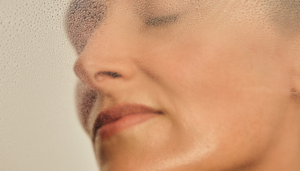Stem cells are essential for regenerating and repairing tissues in our body. These cells are capable of developing into any other type of cell, making them critical for maintaining healthy organ function.
As we age, however, the number and quality of stem cells in our body decline, leading to tissue renewal and repair issues. This decline is known as stem cell exhaustion.
In many organs, stem cells maintain tissue homeostasis and replenish cells lost due to injury or normal turnover. For example, in skeletal muscle, a single type of cell called a satellite cell is responsible for both tissue renewal and repair.
In skin epidermis, which is constantly exposed to injury, there are multiple stem cell niches, particularly associated with hair follicles, each one generating its own progeny and territory.
The liver, lungs, and pancreas have low renewal rates under normal conditions. Still, different cell types can acquire stem cell properties, including proliferation and multipotency after injury.
As stem cells become exhausted, tissue renewal slows down, and the body becomes more susceptible to various diseases. For instance, immunosuppression, muscle loss, frailty, and weakening of bones can all result from stem cell exhaustion.
Various interventions can stimulate stem cell rejuvenation and renewal, with exercise and fasting being among the most effective. In addition, hundreds of clinical trials using stem cells are conducted worldwide each year.
Natural compounds such as curcumin are identified as having antioxidant mechanisms that support stem cell survival and activity.
Researchers have also investigated the potential of cellular reprogramming to counter the decline of stem cell function with ageing.
Cellular reprogramming involves converting adult somatic cells into embryonic pluripotent cells, called induced pluripotent stem cells (iPSCs), by introducing four transcription factors, namely, OCT4, SOX2, KLF4, and MYC.
The process of cellular reprogramming requires several weeks, during which cells first lose their differentiated phenotype by transcriptional repression of cell identity genes and subsequently transactivate pluripotency genes.
The full reprogramming process changes cellular identity and rejuvenates cells by resetting several aging-associated features, such as p16 reduction, telomere extension, and resetting of the DNA methylation clock.
Interestingly, cellular rejuvenation occurs progressively, starting shortly after de-differentiation initiation. It’s possible to initiate reprogramming with the four transcription factors, interrupt the process at an intermediate state, and allow cells to return to their original identity.
This transient cellular perturbation is called partial, transient, or intermediate reprogramming. It can rejuvenate cellular markers of ageing, such as the DNA methylation clock, DNA damage, epigenetic patterns, and ageing-associated changes in the transcriptome, both in vitro and in vivo.
Transient reprogramming in mice confers repair capacity to old tissues so that subsequent damage is repaired as efficiently as in young individuals.
This increased repair capacity has been demonstrated in models of tissue damage in the endocrine pancreas, skeletal muscle, nerve fibres, eye, skin, heart, and liver. Tissue dysfunctions characteristic of natural ageing, such as reduced visual acuity and the loss of adult neurogenesis in the hippocampus and long-term memory, can also be partially reversed by transient reprogramming.
There are a few instances in which transient reprogramming is beneficial during the process of tissue repair (and not only before the injury), such as traumatic brain injury and skin wound healing.
It should be noted that the lifespan of progeroid mice can be extended by transient reprogramming. However, the extension of longevity by the four transcription factors has not yet been reported for wild-type mice.
Additionally, researchers are exploring using natural compounds to support stem cell health and activity, such as curcumin, which has been identified as having antioxidant mechanisms that can promote stem cell survival and function.
Other natural compounds, such as resveratrol and quercetin, have been found to activate pathways that enhance stem cell function and support tissue repair.
Furthermore, scientists are investigating cellular reprogramming as a potential strategy for combating stem cell exhaustion and promoting tissue rejuvenation.
Cellular reprogramming involves converting adult somatic cells into pluripotent stem cells (induced pluripotent stem cells or iPSCs) by introducing four specific transcription factors into the cells. This process changes the cellular identity and resets the ageing markers within the cells, including the DNA methylation clock and telomeres, leading to cellular rejuvenation.
Interestingly, it is possible to initiate cellular reprogramming, interrupt the process at an intermediate stage, and allow cells to return to their original identity.
This transient cellular perturbation, known as “partial,” “transient,” or “intermediate” reprogramming, can rejuvenate cellular markers of ageing, such as the DNA methylation clock, DNA damage, epigenetic patterns, and ageing-associated changes in the transcriptome, both in vitro and in vivo.
Moreover, transient reprogramming in mice has been shown to confer repair capacity to old tissues, enabling them to repair damage as efficiently as young tissues.
This increased repair capacity has been observed in models of tissue damage in various organs, including the endocrine pancreas, skeletal muscle, nerve fibres, eye, skin, heart, and liver. Additionally, partial reprogramming has been found to partially reverse tissue dysfunctions characteristic of natural ageing, such as reduced visual acuity and the loss of adult neurogenesis in the hippocampus and long-term memory.
Stem cell exhaustion is a significant contributor to age-related decline and disease. Researchers are exploring various strategies to combat this phenomenon, including natural compounds, such as curcumin, and cellular reprogramming, which has been found to reset the ageing markers within cells, promoting tissue rejuvenation and repair capacity.
Altered Intercellular Communication
As we age, our body’s cells begin to communicate less effectively with each other. This altered intercellular communication can lead to various negative effects on our health, including the chronic in…









